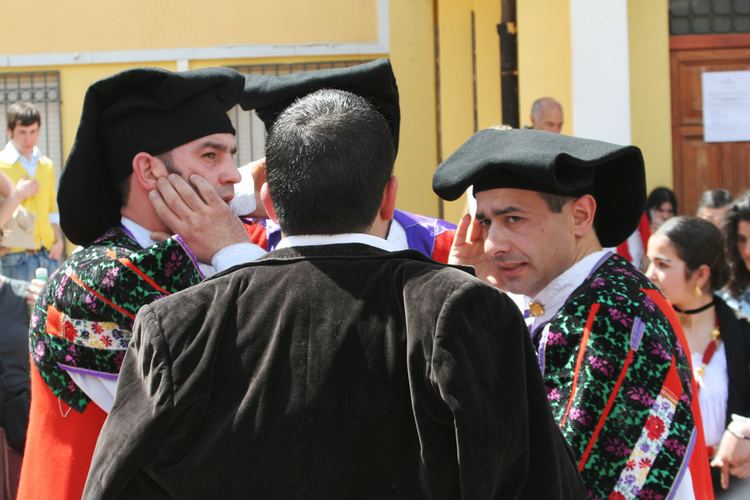Criteria ??? Region Asia and the Pacific | Domains Music Reference 00165 Inscription 2008 (3rd session) | |
 | ||
The cantu a tenòre (also known in Sardinian language as su tenòre, su cuncòrdu, su cuntràttu, su cussèrtu, s'agorropamèntu, su cantu a pròa) or canto a tenore in Italian is a style of polyphonic folk singing characteristic of the Barbagia region of the island of Sardinia (Italy), even though some other Sardinian sub-regions bear examples of such tradition.
Contents
In 2005, Unesco classed the cantu a tenore among intangible world heritage.
Etymology
The word tenore, itself, is not to be confused with the word "tenor" as a simple description of vocal register; it refers to the actual style of folk singing and is distinguished from other similar styles called by different names in different places on the island, such as taja in Gallura and concordu in Logudoro (Sassu 1978).
In the Barbagia region on the island of Sardinia, there are two different styles of polyphonic singing: cuncordu, usually a form of sacred music, sung with regular voices, and tenore, usually a form of profane music, marked by the use of overtone singing.
Technique
A tenore is practised by groups of four male singers, each of whom has a distinct role, here listed in descending pitch order—form a chorus (another meaning of tenore):
The bassu sings the same note sung by the 'oche , and contra a fifth above the bassu. The 'Oche and the mesu 'oche sing in a regular voice, whereas the contra and the bassu sing with a technique affecting the larynx. The 'oche sings a poetic text, which can be of epic, historic, satirical, amorous or even protest genre. The chorus consists of nonsense syllables (for example bim-bam-boo).
According to popular tradition, mesu 'oche imitates the sound of wind, while the contra imitates a sheep bleating and the bassu a cow lowing.
The solo voice starts a monodic vocal line and is then joined by the others as he indicates to them to join in.
The effect is somewhat that of a round except that the points where the other singers join in vary and, thus, the harmonies vary from version to version. The execution differs in details between each of the villages where a tenore is sung to such an extent that the village can be immediately recognized.
Tradition
Although nowadays cucordu and cantu a tenore are performed only by men, memories remain of a time where women groups performed as well, following the matriarchal tradition of Sardinia. According to some anthropologists, cantu a tenore was performed back in Nuragic times.
Some of the most well known groups who perform a tenore are Tenores di Bitti, Tenores de Orosei, Tenores di Oniferi and Tenores di Neoneli.
